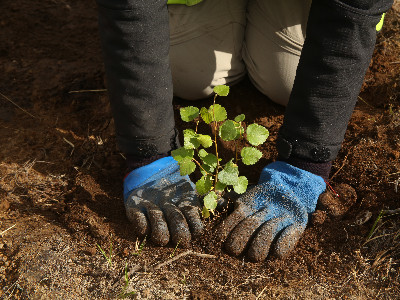Thursday 16th December 2021, 5:15pm

Conservation and Access Officer Davie Black takes a look back over 2021 as he clears his desk ready for more in 2022.
We have been as busy as ever in 2021 keeping a lookout for inappropriate development activity in Scotland’s hills.
As a sign of the Scottish Government’s commitment to woodland expansion, which we support in principle as a means of tackling the climate emergency and the nature crisis, we responded to 18 separate woodland consultations, from planting of montane willows in the Loch Avon basin, to felling and replanting of large forestry plantations, to new native woodland schemes.
It is the detail of each proposal that is important, and we try to make a positive contribution when asked – on recreational access and on natural treelines, encouraging the natural regeneration of trees.
The focus of our comments was on maintaining informal routes from roadside to summits, with planting and fencing having the potential to obstruct ways up and down each hill. Many routes, especially on Corbetts, are not surfaced paths and can be easily overlooked. We also commented on the visual impact of woodlands in the landscape, to try and avoid those straight, dark green, hard edges that many older plantations have.
The impact of civil engineering works was a major strand of our work, with 44 windfarm proposals in the planning system, with nine associated powerline connections and upgrades. Four large hydro power schemes were also proposed, and a handful of telecoms masts.
Electricity generation from renewable sources is essential, in the same way as woodland expansion and peatland restoration is. But it has to be the right development in the right place, protecting for future generations the mountaineering interests in landscape and the wild qualities found there.
With the onshore wind turbine proposals, 23 were at an early stage of scoping the environmental parameters to assess properly. At this early stage our involvement is to suggest viewpoints that may be affected, on mountain summits and visibility on the routes to or from them.
We checked 21 windfarm proposals that were submitted to the planning system for approval, of which we objected to four, with a partial objection to another scheme for five out of 23 turbines due to their location and height. Two of these objections were schemes that would, if built, spill out onto the wilder mountain landscape south and west of Loch Shin, another was very close to a curve of six ‘Donalds’ in the Lowther hills, and finally, a lone scheme by Dunbeath in Caithness that would encroach upon the setting of Morven and Scaraben.
Further on in the planning process, where previously submitted windfarm schemes were rejected after assessment, and where the developer appealed the decision, Public Local Inquires are held. Our planning volunteer submitted more detailed arguments, in writing and in person, to three PLIs on the negative visual impacts on the landscape, where in our opinion developers often underplay the significance of the impact.
Recreational access is important to our activities as we responded to 74 access-related enquiries this year. There is a seasonality to this, from the status of snowsports touring in the countryside early in the year when there was good snowfall and facilities were in lockdown, through climbing in the bird breeding season, wild camping when public health restrictions were eased, and deer stalking in late summer and autumn. Constant challenges encountered throughout the year include deer fences across routes, locked gates barring access, car parking on verges, unhelpful signs on gates and fences and the appropriateness of bolts being placed on crags.
Finally, there is our Tree A Trip initiative, where we offer the opportunity for members to donate a tree to be planted on a wild highland estate, to help mitigate recreational carbon footprint, and support wildlife and biodiversity in Scotland’s mountains. To date Mountaineering Scotland members have donated 385 trees as mitigation for car trips to go walking or climbing.